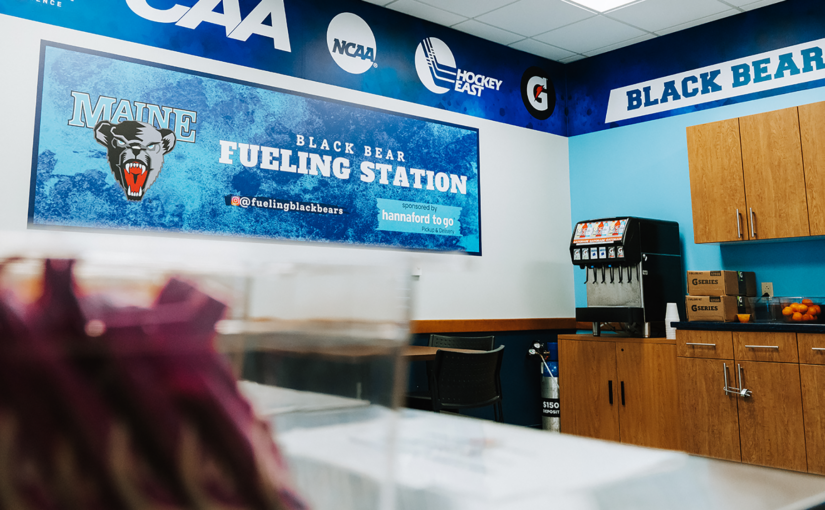Creating an athletics hall of fame
High school gyms across the nation are filled with banners and plaques noting memorable events in school history — championships, All-State performances, 1,000 point and 100 goal careers. Schools take pride in their athletic past, and rightly so.
At some point, a school may decide that it would like establish its own hall of fame to permanently recognize the best of what their program has to offer. While it’s not an easy task, establishing a hall of fame for your school can be one of the best ways to connect your program with its history.
Here are some step by step suggestions to get you moving in the right direction.
1. Form the ‘Hall of Fame Committee.’
The first step in creating a hall of fame for your school is likely the most important step. Who is going to determine how the hall of fame will function? Whose responsibility will it be to evaluate and investigate the credentials of the nominees? Who will take ownership and ensure the sustainability and integrity of the hall of fame? The selection of a quality committee is the key.
A hall of fame can be the brain child of alumni, the booster club or the athletic director. Regardless of its origin, when putting together a committee, it’s extremely important that the athletic director be involved in some way. That may sound like common sense, but believe it or not, there are athletic halls of fame that function completely independent of the athletic department and athletic director. What a missed opportunity.
That athletic director involvement can be anything from the committee chair to committee member or a consultant. This involvement ensures the connection of the present with the past.
There should also be representation from the school’s athletic past. Go back as far as you can and find interested athletic alumni from every decade. You may want to consider a long-time school administrator or community member who has had involvement in the athletic program. Having committee members who have firsthand knowledge of the nominees and a vested interest in the promotion of the athletic program gives you a solid foundation to build upon.
2. Select criteria.
Once your committee is in place, the first thing they must do is decide what constitutes a “hall of famer” in your school. Here are some questions to consider.
- What categories will we recognize? Athlete, coach, administrator, team and special service or community service typically cover the gambit.
- How much time must elapse before one is eligible for induction? One school of thought is that 10 years must have passed since graduation for an athlete or team and at least five years for a coach or administrator. Because they are a special category, special or community service inductions are typically at the discretion of the committee.
- Are the selections based on high school accomplishments alone or should collegiate and pro careers be included?
- What is the nominating process? No one should be considered without first being nominated. A nomination form should include the name and contact information of the nominee and person making the nomination, year of graduation, sports played and athletic accomplishments of the nominee (all-league, all-section, all-state, championships, records, etc.).
- What are the deadlines? Deadlines should be set for nominations in order to give the committee time to confirm nominee credentials and deliberate candidates. A selection deadline should also be set in order to give the committee enough time to notify the inductees and advertise the event so you can attract as many attendees as possible.
- How large will the induction class be each year? You want to have enough inductees to attract a good crowd to your event but not too many to create a six-hour ceremony. More importantly, you don’t want to induct so many people each year that you run out of potential candidates. One idea would be to induct one athlete per decade. One team and one coach/administrator per year is also a good way to keep your pool of candidates from running dry. Once established, some schools have special induction classes such as all female, all teams or all coaches.
- How do we get the word out? Once your hall of fame is established, a lot of your publicity will be via word of mouth. When you’re getting started, you can use all sorts of social media. A nomination form should be available on your school or athletic website. The hall of fame should be touted at your awards dinners and through the local press. Many of your athletic alumni likely have left the area, but be assured that word of a hall of fame will eventually reach them. As your hall of fame progresses, you can collect emails and create a distribution list dedicated to all things hall of fame.
While having guidelines is important for continuity, they don’t always have to be written in stone. A hall of fame in New York recently inducted a coach a year after he retired instead of waiting the agreed upon five years because of his failing health.
It was the right call, as six months later the coach passed away. By using common sense (and compassion) the coach and his family (not to mention many of the coach’s former athletes) had one more magic moment together.
3. Choose the award.
 Inducting someone into your school’s hall of fame is an honor you hope they never forget. Be sure to give them something worthy of the honor.
Inducting someone into your school’s hall of fame is an honor you hope they never forget. Be sure to give them something worthy of the honor.
A plastic trophy, while a nice sentiment, just doesn’t cut it. Something more unique like a crystal (or glass) etched award, a bowl or something unique to your hall of fame is a nice way to commemorate the honor. This could be costly, but there are ways to cover that expense which will be discussed later.
Upon being notified of selection, a hall of fame pin or polo in school colors is a nice touch to let the inductee know they are now part of something special. Besides the award the inductee takes home for his or her mantle, many schools also create plaques made with the inductee’s photo or image that go on a “wall of fame” in the gym lobby. It’s a great feeling to watch current student-athletes reading a hall of famer’s credentials and aspiring to be up on that wall someday themselves.
If cost is a factor, some schools have a virtual hall of fame established on their websites.
4. Organizing the ceremony.
Next to selecting the committee and voting on inductees, the induction ceremony is key. The nice thing is that your possibilities are many and are only limited by the amount of time and money the committee can invest.
Some schools have their induction ceremony as part of their homecoming halftime festivities. Other schools host a formal banquet in the school cafeteria and some pull out all the stops and have a formal, sit down dinner with speakers, music and programs.
No matter what direction the committee decides to go, when done right, a successful hall of fame ceremony can become part reunion, part wedding reception and part birthday party. Just keep in mind that inductees and their families may be travelling from out of town for the event. You want the ceremony to be worth the trip.
5. Funding the event.
Once again, it’s all about how much you’re looking to spend. The biggest expenses for a hall of fame are the ceremony and the awards. Three ways many halls raise funds are through sponsorships, program ads and fundraising events.
As mentioned earlier, your awards could be costly. By offering an opportunity for family or friends to show their support for their loved one is to sponsor their award. For a certain price, which covers most, if not all of the award, a sponsor can have their name listed on the hall of fame award. Selling ads in your hall of fame program is an opportunity for pure profit. Make the program appealing by adding professional biographies of each inductee.
An annual fundraiser should keep the hall of fame in the black financially. A simple 50/50 raffle at the induction event is a start. An annual golf outing is also a great way to raise funds while including the athletic alumni.
An athletic hall of fame, once established, can easily turn into an anticipated annual event for your community. While its establishment may take some initial heavy lifting, those early efforts can really reap dividends later.
Giving alumni an opportunity to celebrate their accomplishments while exposing current student-athletes to those who come before them is a win-win for your program, school and community.
One thought on “Creating an athletics hall of fame”
Leave a Reply
You must be logged in to post a comment.






Are their consultants available to help schools get started and facilitate a success High School Athletic Hall of Fame process and event?